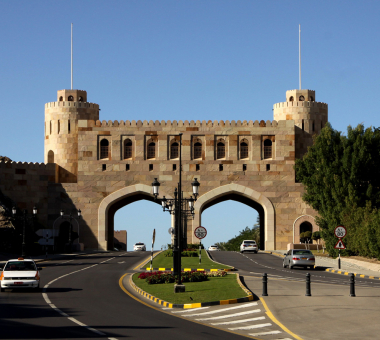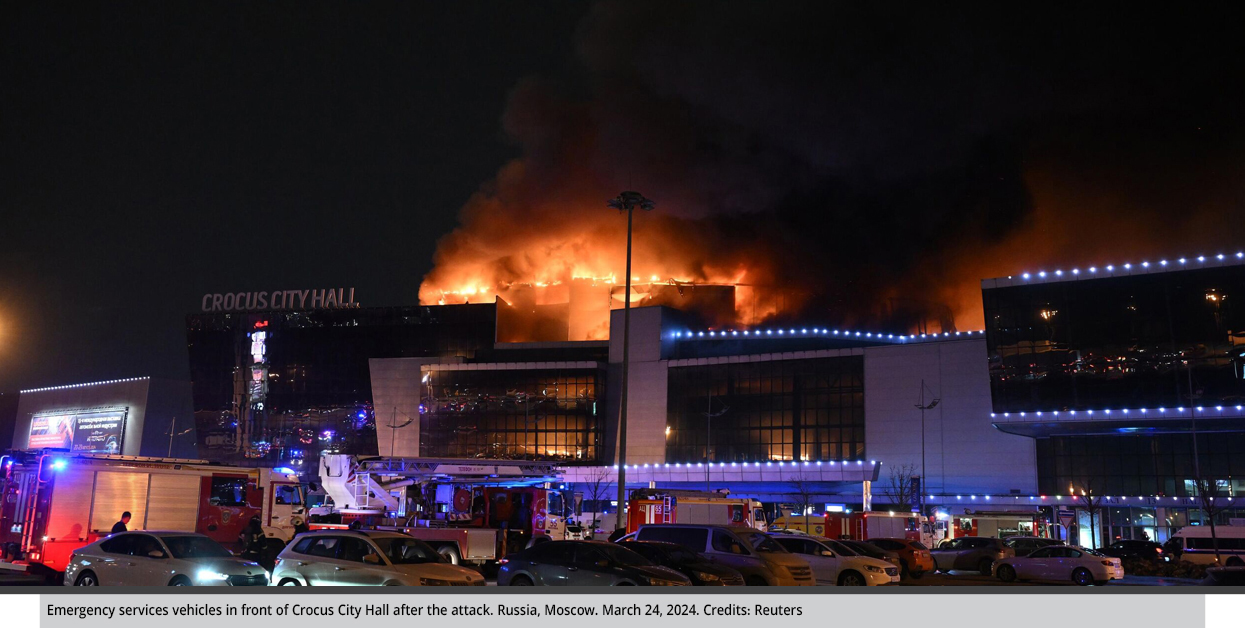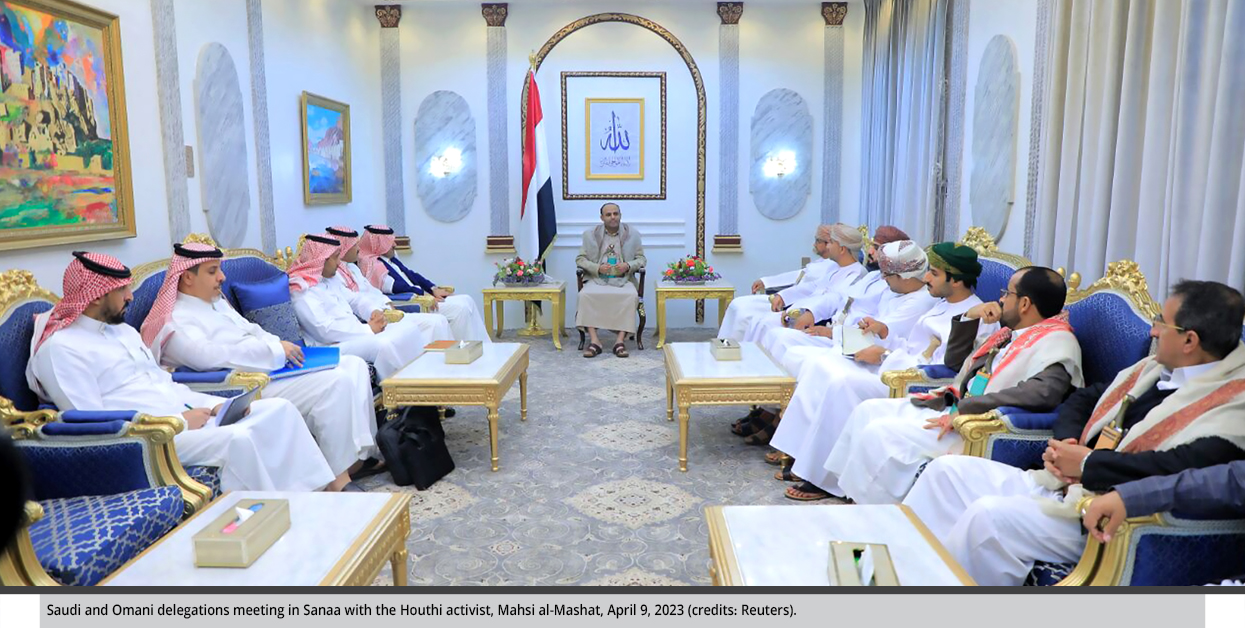Wadi al-Kabir Attack: The Event Indicators and the Symbolism of Place
This position assessment addresses the terrorist attack on a mosque in the capital city of Muscat in the Wadi al-Kabir region, covering the implications related to the choice of location and its symbolism, the perpetrators’ identities, their motives, and the future repercussions of the attack.
by STRATEGIECS Team
- Release Date – Jul 24, 2024

The terrorist attack on a mosque in the Wadi al-Kabir region of Muscat in Oman on the morning of July 16 raises many questions about its motives, timing, location, implications, and repercussions. The attack was claimed by the terrorist organization ISIS later that same day through its channel on the Telegram. The attack resulted in nine deaths, including four Pakistani citizens, one Indian citizen, one Omani police officer, and three of the terrorists who carried out the attack, in addition to injuring more than 28 other people.
A situation assessment published by the Strategic Research Institute on the last day of 2023, “How Political Islam Groups see the War in Gaza,” concluded that the rhetoric of political Islam groups is expected to develop in the long term towards more extreme and radical directions. This extremism will influence the trends within Arab and Islamic societies, regardless of the outcomes of the war in Gaza.
The factors driving these trends are directly linked to the attacks of October 7 and the subsequent Israeli war, which led to unprecedented humanitarian suffering for the people of Gaza amid collusion from the international community, particularly the United States and European countries.
In this context, the terrorist attack in Muscat carries many implications related to the choice of location and its symbolism, the identity of the perpetrators, their motives, and its future repercussions on multiple levels.
Place Symbolism
The execution of the attack in the Omani capital of Muscat necessitates examining the uniqueness that distinguishes the Sultanate as a unique Arab/Islamic case due to its natural, political, and social geography.
First, the coastal Sultanate, covering an area of 309,500 square kilometers, is situated at the heart of the junction connecting the Gulf of Oman, the Arabian Gulf, and the Strait of Hormuz on one side, and Yemen and the Arabian Sea on the other, with Saudi Arabia and the United Arab Emirates (UAE) on the third side. It has a population of more than 5 million people, less than half of whom are expatriates, which is a relatively small population for a vast area with diverse terrains.
Second, the Sultanate of Oman remains distant from sectarian and religious tensions. The Omani society is unique in that it predominantly follows the Ibadi sect, which is distinct from both Sunni and Shia Islam. This is the sect of the ruling sultanate family. The society is characterized by religious and ethnic stability and an absence of sectarian conflicts. The Ibadi branch of Islam make up between 40% to 45% of the Omani population, the Shia branch accounts for no more than 2%, and the rest are Sunni, according to the Oxford Encyclopedia of the Modern Islamic World.
Thirdly, Oman has played and continues to play active political, diplomatic, and economic roles both regionally and internationally based on principles of neutrality and discretion. This is evident in its involvement in the Syrian crisis, the Yemeni crisis, the Iranian nuclear file, and others vital issues.
For instance, Oman has been actively involved in mediation efforts concerning border issues with the UAE, Yemen, and Saudi Arabia, and it hosts some leaders of the Houthi Ansar Allah movement in Muscat. At the same time, Oman maintains stable relations with the moderate Arab states, aligning closely with their policies to a significant extent.
Timing and Context of the Attack
The terrorist attack occurred in the context of heightened tensions in the Middle East, which entered a new phase after October 7, 2023, and the ongoing war in the Gaza Strip. The following are key features of this escalation.
First, the role of the central Iranian axis in the war, both through direct confrontation between Israel and Iran on one hand, and between Israel and armed groups that linked to Iran on the other hand, particularly in Lebanon, Yemen, and Iraq. This role has relatively increased the influence of the Iranian axis in the context of confronting Israel.
Second, the role of the Iran-backed Houthi Ansar Allah group in Yemen in the context of this escalation, including their activities on the Red Sea front and their launching of rockets and drones towards Israel. Notably, on July 19, 2024, a drone attack in Tel Aviv resulted in the death of one Israeli and the injury of eight others.
Third, the continuation of the war in Gaza, the failure of ceasefire negotiations, and the increasing likelihood of escalating tensions on the northern front between Israel and Lebanon.
Fourth, the role played by the Arab Quartet countries (Jordan, Egypt, Saudi Arabia, and the UAE) to de-escalate regional conflicts and end the Israeli war on Gaza by implementing international resolutions related to the Palestinian issue and the Arab-Israeli conflict. Additionally, all four countries seek to counter the Iranian expansionist project and its interventions in Arab affairs.
The Perpetrators Identity and Their Motives
The results of the investigations released in a statement by the Royal Oman Police on July 18 revealed that “the three perpetrators involved in the incident were Omanis and were brothers” who “died as a result of their insistence on resisting the security men.” Ongoing police investigations also found that they were influenced by extremist ideologies.
Additionally, the Asharq Al-Awsat newspaper reported that the three brothers held “prestigious positions”: one had a doctoral degree and worked in a key government ministry, the second worked at the Central Bank of Oman, and the third worked in the municipality.
The statement from the Royal Oman Police about the perpetrators’ influence by extremist ideologies aligns with what ISIS published in its statement on Telegram, claiming that “(three suicide attackers) from the organization attacked on Monday night a gathering of Shia during their annual rituals at their temple in the Wadi al-Kabir area of the capital.”
This also coincides with the video released by ISIS that shows the three brothers standing behind the ISIS flag and pledging allegiance to ISIS leader Abu Hafs al-Hashimi al-Qurashi. In the video, one of the attackers justifies their actions with inflammatory and sectarian rhetoric, criticizing the West, led by the United States, for waging the “largest doctrinal, military, media, and economic war against Muslims in general, and against the organization specifically.”
Conclusions
Based on the previous context and extending from a situation assessment published by the Strategic Research Institute on April 3 titled “How Can the Attacks on Crocus be Interpreted?”—which indicated that ISIS is attempting to re-emerge on a global scale and revive the global jihad that formed the basis of global Salafism, especially given the weakness of Al-Qaeda and other ISIS branches, and their inability to carry out major attacks worldwide—the terrorist attack in Muscat can be analyzed and its repercussions can be inferred on multiple levels. Below are six of them.
First, the available indicators so far suggest that ISIS has successfully exploited the post-October 7 situation and the Gaza war in a dual manner by leveraging the prevailing anger and simultaneously reinforcing its own narrative.
Second, targeting the Sultanate of Oman represents an attack on soft targets or weak links in terms of geography, security, and society. This suggests an increased likelihood of future terrorist operations not only in Oman but also in other countries that were previously not central to such targeting.
Third, the organization’s use of the term “suicide attackers” in its statement suggests that the attackers were members of the organization rather than just individuals influenced by its ideas. ISIS often uses the term suicide attackers for operatives who have undergone military training and possess weapons and ammunition, enabling them to engage in combat and withdraw if necessary. This is similar to the method used in the attack on the Crocus Hall in Russia, which involved four attackers.
This implies two possibilities: first, there may be active ISIS cells within Oman; second, members of the organization might be traveling to other locations for training.
Fourth, the use of three armed attackers by the organization to target a gathering at a mosque indicates their intention to cause as many casualties as possible. However, the rapid security response prevented a higher death toll. This pattern of attacks has become recurrent for the organization.

For instance, in Moscow, they targeted a music hall, resulting in more than 140 deaths and hundreds of injuries. In early January 2024, their attacks in Iran targeted a memorial for the former Quds Force commander Qassem Soleimani, leading to around 100 deaths.
Fifth, the success of ISIS in recruiting three brothers from a prominent and highly educated family with government positions and roots in a religiously tolerant and politically stable community underscores the ongoing danger of the organization’s rhetoric. It also highlights the ability of this rhetoric to act beyond central organizational orders and traditional counter-security measures.
Finally, Hazem Al-Dmour, general manager of the Strategiecs Research Institute, believes that the attack in Wadi al-Kabir has implications beyond the geography of Oman itself. One proposed scenario is that the Muscat attack might be part of an intelligence war orchestrated by countries with close ties to the tensions and conflicts in the Middle East. The operation could have been carried out to settle scores or send messages to relevant parties.
The choice of Oman might be an attempt to push the Sultanate out of its neutral and non-aligned stance in its foreign policy. This scenario is reinforced by the fact that previous ISIS attacks in Russia and Iran were officially linked to specific intelligence agencies capable of using the organization as a trademark for carrying out and claiming terrorist attacks.

STRATEGIECS Team
Policy Analysis Team
 العربية
العربية
